Jean-Louis Godefroid (JLG): What determining factors guided you towards the practice of author photography?
André Cepeda (AC): My first contacts with photography took place at the Coimbra Pho- tography Encounters, where my mother was secretary to the director.
I remember going to meet her and having been able to observe the entire atmosphere surrounding the preparation of a festival: the receipt of the prints, the creation of frames, hanging, etc. In 1989, at the age of twelve, I began helping the festival team; it was the time of the Robert Franck exhibition. I was greatly marked by this very new context for me, the images made me discover a new world, a new reality that I hadn’t known about until then and to which I was highly susceptible.
I wanted to understand the meanings of the images, what they offered us, how to interpret them and to understand my relationship with the worlds created by all of these photographers.
After this initial experience, I began taking photographs straight away. In fact, I took photographs of photographs; they were reproductions. I remember visiting exhibitions and photographing the pictures. I think it was in an attempt to better understand the compositions and forms of the photographs which I really liked, such as those by Meatyard, for example. He photographed his children and through the fiction, he created a rather strange, mysterious world. His work is foundational and still accompanies me in what I do today: never say everything but show everything, leave space for the spectator’s imagination...
JLG: How did you your training continue?
AC: I worked at the Coimbra festival for several years, until I was 18. Then I went to live in Brussels for two years, where I attended several workshops and a course at the art college in Ixelles, which was very important in techni- cal terms. The quantity of information I found in Brussels was crucial for the following years. I began taking photographs with Polaroid Positive/Negative film and shooting film in Super8, to be able to photograph a lot and to exper- iment with other techniques. Afterwards I went to live in Porto, where I completed a final year at college. A month later I began working at the Por- tuguese Photography Centre in Porto, where I stayed for three years. Before becoming a photographer, I wanted to understand all the mechanisms sur- rounding photography, to research, train and stage exhibitions, in order to fully understand all the process and meet as many photographers as possible.
I followed several courses in black-and-white and colour printing. The lab work had always interested me and it still does. My approach to pho- tography can not be summed up by the image but extends to everything that surrounds it: the construction, printing, montage and books—every- thing that gives rise to meaning and thought.
JLG: What was your first major achievement as an author?
AC: At the age of 17, I began searching for a personal language with pho- tography; I worked a great deal on improving my practice. In 1999, I went to Moscow for one month. This was a sort of initiatory journey for me, during which I was able to begin the work that I wanted. My objective was to create as many shots as possible, to make tangible everything that I felt, to “bring out” all the influences of these images that I had in my head. I produced an enormous quantity of pictures, two or three 35mm films per day and several 120 films as well.
After Moscow I moved back to Brussels where, as part of the Pro- gramme of Artist Residencies in the Contretype Photographic Art Centre, I undertook my first project. This gave rise to an exhibition and a publica- tion entitled Anacronia. That was where everything truly began.
JLG: You are currently completing a project, which you have been working on for several years in Porto, consisting of landscapes, interior scenes and portraits. How did you develop this project?
AC: This project came about quite naturally. It arose from a need to pho- tograph what was around me, drawing inspiration from everyday life. I met and approached the people I photographed in the street and in places
I frequented. I have been living in Porto for thirteen years now and have photographed and observed the city a great deal. But for this work, I was interested in a more specific reality. Porto contains what are known as Islands. These are districts that were built in the 19th century, following the arrival of migrants from the North of Portugal to work in the city. It
is quite unusual. Each street has a single entrance gate and is made up of little 16m2 houses with communal sanitary facilities. These urban areas have now been deserted by the workers and are occupied by people living off social security and short-term arrangements, which also contributes to the energy of this city. Life goes on as though it were on a completely isolated island, the places and people are scarcely accessible; it is a life that is both socially and individually beyond society. The isolation results from poverty, alcohol and drugs. I began this project by walking through these streets where no one goes as a matter of course, first photograph- ing the houses, then the interiors and then the people. Surprisingly, these are the places where I feel comfortable, even if there are risks and danger. I was fascinated by this boundary which is difficult to cross. I wanted to see how life went on for these marginal inhabitants, to listen to their life stories and what they thought about life.
JLG: To what extent is your work connected with your personal life?
AC: I’ve given this a lot of thought. One day I read an interview with the Algerian film director, Abdel Kechiche. He stated that his cinema was the reflection of his life, his personal story. My father died when I was three and I experienced very strong emotions and a great deal of suffering. I don’t like to interpret these emotions, but I sometimes think that they gave rise to my sense of revolt in relation to bourgeois false appearances and social injustice. If I am interested in the world of poor people, it is because I enjoy being with people who have difficult lives, and who have stories to tell. My life involves thinking about my photography work every day; it is about interpreting other people’s thoughts, expressing my ideas, having experiences and understand- ing how to do things. I can not imagine myself separately from my work. What is important? What makes me get out of bed every morning? What at- taches me to this place? How can I continue to evolve? These are the ques- tions I ask in this work and for me the answer lies in the feelings one has for others, in the love for one’s family. These are the basic, essential things.
JLG: When I look at your photographs, I find them very silent, cut off from the noise of the world...
AC: Silence is where I rediscover myself. I have visual memories of places and when I take photographs, there is no sound; I am in the landscape and I feel comfortable in this silence. When I dream, I remember images, never sounds. My relationship with life has always been visual first and fore- most, but I very much enjoy listening to music. I play the guitar. It is very important for me, but that is another story...
JLG: When we look at the houses that you photograph from the street, all the doors, windows and curtains are closed. There is this same feeling of emptiness in the landscapes and in the people’s faces.
AC: That is what you feel here when you walk along the street, because everything here is closed, abandoned and for sale. There are more or less 216,000 inhabitants in Porto, an enormous city, whose hour of glory has past. During the property boom, the suburbs developed extensively, but many people have now left because there is no work. The majority of those who stayed in the centre were born in Porto. They are often poor and old, and live in very difficult circumstances. There is a prevailing sense of desolation. It is very hard to meet people every day in the street who have lost all hope, who are closed, sad and lost. They have worked all their lives and at the end they have nothing. It is very hard. When I came to live here, I didn’t know about this situation. It is not easy, but all of this inspires me. It is important to think about the social situation and the cur- rent crisis we are going through: social differences and the causes behind people’s difficult lives. My photographs are the reflection of the times we are living in. After the revolution in 1974, there was hope for a better world. After various crises and difficult adaptations, people no longer know where they stand or where they are heading.
JLG: You worked with a press camera in the interiors. How did you go about this?
AC: All the shots were taken with a press camera. I really enjoy using this camera as it is more about constructing the pictures than taking them; it is a very slow, meticulous process. I like having the time to feel the space and observe the subject, working on the framing, waiting for the light and feeling the image that I am going to take.
Jean-Louis Godefroid and André Cepeda
Entrevista para o livro Ontem.
Porto, 2010
At the moment André Cepeda has a solo show curated by Urs Stahel, at MAAT - Museum of Art, Architecture and Technology in Lisbon, until January 2021
His last book published by Pierre Von Kleist Editions, can be ordered here
Solo exhibition at Cristina Guerra Contemporary Art in 2021
Developing a new project for Rialto6 to be presented in September 2021
André Cepeda was born in Coimbra, in 1976. He currently lives and works in Lisbon, Portugal. In 2012, artist in residence at the FAAP, São Paulo, as the recipient of a scholarship granted by the Calouste Gulbenkian Foundation. Cepeda was shortlisted for the Paul Huf Award, Foam Fotografiemuseum, Amsterdam (2011); Prémio BESPhoto, Lisbon (2010); and the EDP Foundation New Artists Prize, Lisbon (2007). He has been showing his work regularly, in Portugal and abroad, since 1999. He has since then made multiple artist residencies and received many commissions, among which stand out the 2010 Lisbon Architecture Triennale, EDP Foundation (2014), the Fundação de Serralves (2014) and Gulbenkian Foundation (2019). In 2016 he was artist in residency at the Residency Unlimited, in Brooklyn NY, in the context of the partnership Atelier-Museu Júlio Pomar/ EGEAC and Residency Unlimited, NY. He is currently working in a new exhibition and book project with Urs Stahel, to be presented in 2020.
Among his many exhibitions stand out: Cristina Guerra Contemporary Art, Lisbon; Benrubi Gallery, NY; Fridman Gallery, NY; Galeria Pedro Oliveira, Oporto; MNAC – Museu Nacional de Arte Contemporânea, Lisbon; Kasseler Fotoforum, Kassel; Gallery INVALIDEN, Berlin; Espace Photographique Contretype, Brussels; Standard/Deluxe, Lausanne, Switzerland; MARCO — Museo de Arte Contemporánea de Vigo; Le Bal, Paris, France; Haus der Photographie, Hamburg; Wohnungsfrage — Haus der Kulturen der Welt, Berlin; Serralves Contemporary Art Museum, Oporto; CGAC—Centro Galego de Arte Contemporánea, Santiago de Compostela; Calouste Gulbenkian Foundation, Paris; Museu Oscar Niemeyer, a Caixa Cultural, Rio de Janeiro and MASP — Museu de Arte de São Paulo, Brazil.
His work is represented in multiple public and private collections.
André Cepeda founded Blues Photography Studio in 2005 where he produces work for many photographers, instituitions and gallery’s, printing, scanning and photographing. www.blues.com.pt. Since 2008 he runs Inc. Livros e edições de autor, a bookshop specialized in artist books. www.inc-livros.pt. André Cepeda gives a one week workshop every year at the Photography School CEPV, Vevey, Switzerland.
André Cepeda is represented by Cristina Guerra Contemporary Art, Lisbon, Galeria Pedro Oliveira, Oporto and Benrubi Gallery, NY.
Grants/Residencies/Commissions:
2019
Gulbenkian Foundation
2018
Representação Oficial Portuguesa na 16ª Exposição Internacional de Arquitetura – La Biennale di Venezia
EDP Foundation
2016
ATELIER-MUSEU JÚLIO POMAR/ EGEAC E RESIDENCY UNLIMITED, NY
2014
Serralves Museum of Contemporary Art, Porto: work commissioned for the exhibition The SAAL Process: Architecture and Participation, 1974-1976
European Photo Exhibition Award, EPEA02
Ordem dos Arquitectos, Lisbon
2013
Offline Residence (Xerem Associação Cultural), Lisbon
National Museum of Ancient Art, Lisbon
Artist-in-residence, Fundação EDP – Electricity Museum, Lisbon
2012
Calouste Gulbenkian Foundation, Lisbon
Artist-in-residence, FAAP, Sao Paulo, Brazil
2011
Nominated for the Paul Huf Award, Foam Fotografiemuseum Amsterdam, Holland
Ordem dos Arquitectos, Lisbon
Calouste Gulbenkian Foundation, Lisbon
2010
Lisbon Architecture Triennal, Lisbon
BESPhoto Photography Prize, Lisbon
Champalimaud Foundation, Lisbon
2009
Reitoria da Universidade do Porto, Porto
2007
EDP Prize – New Artists
IEFP, Ministério do trabalho, Testemunhos – Iniciativa Novas Oportunidades
2006
RAR Holding, Porto
2003/2004
Artist-in residence, António Henriques Galeria de Arte Contemporânea, Viseu
2002
Centro Nacional de Cultura, Lisbon
2001
Museu da Imagem, Encontros de Imagem, Braga
2000
Portuguese Center of Photography, Porto
1999/2000
Artist-in-residence, Espace Photographique Contretype, Brussels, Belgium
Solo exhibitions:
2017
Depois, Benrubi Gallery, New York
Cão, Galeria Pedro Oliveira, Porto
Uma especie de silêncio, CAAA, Guimarães
Rasgo, Cristina Guerra Contemporary Art, Lisbon, 2017
2016
At the eyes ground, Fridman Gallery, New York, 2016
Depois, MNAC – Museu Nacional de Arte Contemporânea, Lisbon
2015
Untitled, Old School, Lisbon a project by Susana Pomba
Rien, Kasseler Fotoforum, Kassel, Germany
2014
Rien, Centro Cultural Vila Flor, Guimaraes
Kanal, Standard Delux, Lausanne, Switzerland
Rien, Câmara Escura, Torres Vedras
2013
Explicação da Lâmpada, Galeria Pedro Oliveira, Porto
Sob um sol recto, Galeria Pedro Cera, Lisbon
2012
Rien, Galeria Pedro Cera, Lisbon
Rien, Museu do Neo-Realismo, Vila Franca de Xira
Ontem, Galery INVALIDEN1, Berlin, Germany
Canal, with Eduardo Matos, Espace Photographique Contretype, Brussels, Belgium
2011
CAV-Centro de Artes Visuais, Coimbra
2010
O que o futuro foi, Mostra de Vídeo, Laboratório das Artes, Guimaraes
Untitled, Galeria Pedro Oliveira, Porto
Ontem, Espace Photographique Contretype, Brussels, Belgium
BESPhoto Photography Prize, Museum Berardo, CCB, Lisbon
2009
River, Galeria Pedro Cera, Lisbon; Galería AdHoc, Vigo, Spain
Untitled, The Mews – Project Space, London, UK
Project Room, Galeria Reflexus, Porto
2008
Sem título, Mad Woman in the Attic, Porto
Ontem, ZDB Gallery, Lisbon
2006
Stasis, Galeria Pedro Cera, Lisbon
Provas de Trabalho, Projecto Apêndice, Porto
Moving#3, IN.TRANSIT, Edificio Artes em Partes, Porto
Moving#2, Galeria AdHoc, Vigo, Spain
Moving, Cinematic Art Gallery, Vila do Conde
Anacronia, KGaleria, Lisbon
2005
Anacronia, Museu de Imagem, Braga
Anacronia, Espace Photographique Contretype, Brussels, Belgium
Jungle, Espaço Bartolomeu 5, Lisbon
2004
Viseu, António Henriques Galeria de Arte Contemporânea, Viseu
Closer, Galeria +Consigo, Coimbra
2003
Mapa de Intensidades, Oficina, Galeria Fernando Santos, Porto
2002
Anacronia, Gallerie Image, Aarhus, Denmark
Corpo, tempo, desejo e morte, Galeria Massa, Porto e Vulcão dos Capelinhos, Azores
2001
Pontes, lugares e antropologia, Silo-espaço cultural, Portuguese Center of Photography, Porto
2000
Anacronia, Encontros de Fotografia de Coimbra, Coimbra
Group exhibitions:
2018
Before and After Architecture, Chicago Architecture Biennial, with Nuno Brandão Costa, Chicago
Public without rhetoric, Representação Oficial Portuguesa na 16ª Exposição Internacional de Arquitetura – La Biennale di Venezia, Veneza
Variations Portugaises, Abbaye St. André – Centre de Art Contemporain Meymac
Escala 1:1. 21 Artistas Contemporâneos Portugueses, Tabacalera, Madrid
A preto&branco, Sociedade Nacional de Belas Artes, Lisboa
Rhytm of Distances: Prposition for the repletion, Galeria Vertical/Silo Auto, Porto
2017
Uma Colecção = Um Museu, MACE – Museu de Arte Contemporânea de Elvas, Elvas
Them or us, Galeria Municipal do Porto, Porto
Un certain regard, Obras da Colecção Norlinda e José Lima, CAV, Coimbra
Da fuga e do encontro: Inversão do Olhar – Espaço Novo Banco; Lisboa
2015
Edita: secuencia/sentido, CGAC-Centro Galego de Arte Contemporánea, Santiago de Compostela, Galicia
The New Social, European Photo Exhibition Award, House of Photography at Deichtorhallen Hamburg, Germany
The SAAL Process: Architecture and Participation, 1974-1976, CCA – Canadian Centre for Architecture, Montreal, Canada (cur. Delfim Sardo and Susan Cotter)
International Fotobook Festival, Kassel, Germany
Calouste Gulbenkian Foundation, Paris, France (cur. Miguel von Hafe Pérez)
2014
The SAAL Process: Architecture and Participation, 1974-1976, Serralves Museum of Contemporary Art, Porto (cur. Delfim Sardo and Susan Cotter)
The New Social, European Photo Exhibition Award, Calouste Gulbenkian Foundation, Paris, France
Le Bal Books Week-end, Le Bal, Paris, France
The New Social, European Photo Exhibition Award, Fondazione Banca del Monte di Lucca, Lucca, Italy; Calouste Gulbenkian Foundatio 02, Paris, France
Nobel Peace Centre, Radhusplassen, Oslo, Sweden (cur. Sérgio Mah)
SUB 40’, Galeria Municipal Almeida Garrett, Porto
Brussels Unlimited - Collection Contretype, Espace Contretype, Brussels, Belgium
Revisitação, Galeria Pedro Oliveira, Porto
Roubaram a partitura, no vazio seguimos, Jardins Efémeros, Viseu (cur. Miguel von Hafe Pérez)
Lei de Ohm, Museu da Electricidade, Lisbon (cur. Filipa Valladares)
Muralhar: Artistas POrtugueses Contemporâneos, Oi Futuro, Rio de Janeiro, Brazil (cur. Delfim Sardo)
The New Social, European Photo Exhibition Award, The Nobel Peace Center, Oslo
2013
Biennial of Photography MASP/Pirelli, MASP, São Paulo (cur. Ricardo Resende)
Visões do Desterro, Caixa Cultural do Rio de Janeiro, Brazil
A Arca Invisível, National Museum of Ancient Art, Lisbon (cur. Delfim Sardo)
Noise, Pedras & Pêssegos, Porto
2012
Buildings and Remnants, Fábrica ASA, Guimaraes European Capital of Culture, Guimaraes (cur. Inês Moreira and Agneta Szylak)
Materiality, Alternativa 12, Wypsa Institute of Art, Gdansk, Poland (cur. Inês Moreira and Agneta Szylak)
New/Old Life, Galery Blanca Berlin, Madrid, Spain
2011
Wherever I Lay My Camera Down is Home, Photographic Festival in Rome, Rome, Italy (cur. Paul Wombel)
Ontem, Encontros de imagem de Braga
Arte Lusófona Contemporânea, Galeria Marta Traba – Fundação Memorial da América Latina, Sao Paulo, Brazil
Panis et Circensis, Centro de Artes de Sines, Sines (cur. Filipa Valladares)
Da outra margem do Atlântico – videoarte e fotografia portuguesa, Centro de Artes Helio Oiticica, Rio de Janeiro, Brazil (cur. Paulo Reis and David Barro)
Private Lives, Centro Cultural de Cascais, Cascais
Da Cartografia do Poder aos Itinerários do Saber, Museu Nacional-Universidade Federal do Rio de Janeiro, Brazil, and Faculdade de Ciências e Tecnologias da Universidade de Coimbra
2010
Ré-collection, Espace Photographique Contretype, Brussels, Belgium (cur. Jean-Louis Godefroid
Impresiones Y comentários – Fotografia Contemporánea Portuguesa, Fundació Foto Colectania, Barcelona, Spain (cur. João Fernandes)
2009
A iminência da queda, Galeria Diário de Notícias, Lisbon
Rescaldo e Ressonância, Reitoria da Universidade do Porto, Porto (cur. Inês Moreira)
Está a morrer e não quer ver, Espaço Campanhã, Porto (cur. José Maia)
2008
The Core of Industry – European Photography, Reggio Emilia 2008 – Musei Civici di Reggio Emilia, Spazio Gerra, Reggio Emilia, Italy
Testemunhos – Trajectos de Qualificação, Edifício da Alfândega, Porto (cur. Sérgio Mah)
Paraísos Indómitos, Marco Museu de Arte Contemporáneo de Vigo, Spain (cur. Virginia Torrente)
Territoire, 6ª Biennale Internacional de Fotografia de Liége, Liége, Belgium
Where are you from? Portuguese Contemporary Art, Faulconer Gallery, Grinnell College, Grinnell, Iowa, USA (cur. Lesley Wright)
2007
EDP Prize – New Artists, Central Eléctrica do Freixo, Porto
Antimonumentos, António Henriques Galeria de Arte contemporânea, Viseu (cur. Miguel von Hafe Pérez)
Deslocações: 4 perspectivas contemporâneas portuguesas, Comité Económico e Social Europeu, Brussels, Belgium (cur. Lúcia Marques)
PhotoLondon 2007, Galeria AdHoc, London, UK
Intro, Espace Photographique Contretype, Brussels, Belgium
Bxl, Centre Wallonie-Bruxelles à Paris, Paris, France
2006
Busca-Pólos, Centro Cultural Vila Flor, Guimaraes and Pavilhão de Portugal, Coimbra
Residências I, Museu do Caramulo, Caramulo
Encontro de Arte Jovem, Bienal de Arte, Chaves
CO2, Miedzynarodowe Centrum Kultury, Krakow, Poland
2005
Colecção da Fundação PLMJ, Centro de Artes Visuais, Coimbra (cur. Miguel Amado)
Creators of European Photography, Photo Festival Union, Lodz, Poland
Desenhar Discurso: Digressões sobre uma urbanidade disruptiva, XIII Bienal de Cerveira, Vila Nova de Cerveira (cur. Miguel von Hafe Pérez)
2004
Re-produtores de sentido, Arte Sesc, Rio de Janeiro, Brazil (cur. Miguel von Hafe Pérez)
E no princípio era a viagem, Bienal de Pontevedra, Pontevedra, Spain (cur. Miguel von Hafe Pérez)
2003
Et puis... voilá, António Henriques Galeria de Arte Contemporânea, Viseu
Colecção de Arte Contemporânea da Caixa Geral de Depósitos, Museu Extremeño e Iberoamericano de Arte Contemporânea, Badajoz, Spain
Pingyao International Photography Festival, Pingyao, China
Salão Europeu de Jovens Criadores, Montrouge/Sant Cugat/Amarante
2002
Galeria Fernando Pradilla, Madrid
Pontes, lugares e antropologia, Cadeia da Relação, Portuguese Center of Photography, Oporto
2001
Memórias da Cidade, Encontros de Imagem, Braga
2000
Bruxelles Active, C02, Brussels, Belgium (cur. Jean-Louis Godefroid)
Bruxelles a l’infini, Espace Photographique Contretype, Brussels, Belgium (cur. Jean-Louis Goderfroid)
Collections:
Fundação de Serralves – Museum of Contemporaray Art, Porto
CGAC – Centro Galego de Arte Contemporânea, Santiago de Compostela, Spain
MNAC – Museu Nacional de Arte Contemporânea, Lisboa
Colecção António Cachola, Elvas
Museu de Arte do rio, Rio de Janeiro, Brasil
Espace Photographique Contretype, Brussels, Belgium
Faulconer Gallery, Grinnell, Iowa, USA
Instituto Camões, Foreign Affairs Ministery, Lisbon
National Photography Collection, Ministery of Culture, Porto
Encontros de Fotografia de Coimbra, Coimbra
Museu da Imagem/Encontros de Imagem, Braga
Culturgest-Caixa Geral de Depósitos, Lisbon
PLMJ Sociedade de Advogados, Lisbon
Museu do Caramulo, Caramulo
Câmara Municipal de Chaves, Chaves
Banco Espírito Santo, Lisbon
Ilídio Pinho Foundation, Oporto
Amorim Turismo, Troia
RAR Holding, Porto
ZdB Collection, Lisbon
Mica, Vigo, Spain
Books:
RDHK, self published, NY, 2016
Depois, MNAC/Pierre von Kleist Editions, Lisbon, 2016
Rua Stan Getz, Pierre von Kleist Editions, Lisbon, 2015
Rien – text book, CCVF, Guimarães, 2014
Whispering Light, self published, 2013
Kanal, Edition Contretype, Brussels, 2012
Rien, Pierre von Kleist Editions, Lisbon, 2012
Ontem, Cahier Blue, Brussels, 2010
River, self published, 2009
Anacronia, Edition Contretype, Brussels, 2005
Discography:
River, Lp, 50 copies
Kanal, Lp, 25 copies
Electricity, single, 150 copies
Filmography:
casal, 16mm, color, 1'25''
bandeiras, 16mm, color, 2’30’’
rien, 16mm, color, 3’15’’
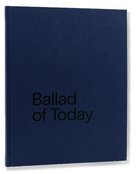 Books2020Ballad of Today
Books2020Ballad of Today Exhibitions2020Exhibition view Ballad of Today
Exhibitions2020Exhibition view Ballad of Today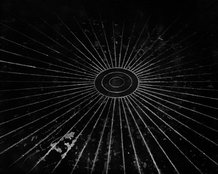 Texts2018Donald Kuspit - ARTFORUM
Texts2018Donald Kuspit - ARTFORUM Texts2018Ricardo Nicolau, Galeria Pedro Oliveira
Texts2018Ricardo Nicolau, Galeria Pedro Oliveira
 Texts2018Claudio Zecchi, CÃO – André Cepeda
Texts2018Claudio Zecchi, CÃO – André Cepeda
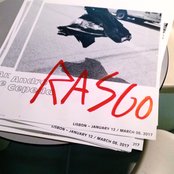 Exhibitions2017Rasgo, Cristina Guerra Contemporary Art Gallery
Exhibitions2017Rasgo, Cristina Guerra Contemporary Art Gallery
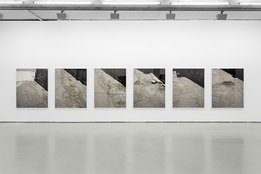 Texts2017Texto Pedro Llano
Texts2017Texto Pedro Llano 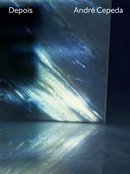 Books2016Depois
Books2016Depois 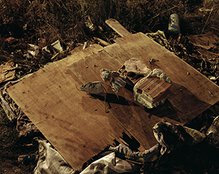 Texts2016At the base of vision text by Sérgio Mah
Texts2016At the base of vision text by Sérgio Mah Texts2016A History of Ruins and Ghosts by António Guerreiro
Texts2016A History of Ruins and Ghosts by António Guerreiro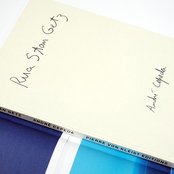 Books2015Rua Stan Getz
Books2015Rua Stan Getz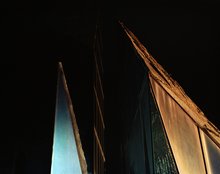 Work2015Depois
Work2015Depois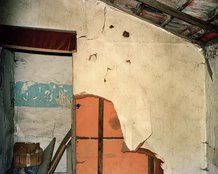 Texts2015Fade by Sérgio Mah
Texts2015Fade by Sérgio Mah Projects2014Untitled, Porto, 2014, 16 mm film, colour, 1’10’’
Projects2014Untitled, Porto, 2014, 16 mm film, colour, 1’10’’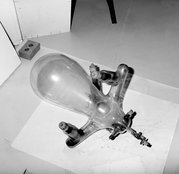 Projects2014Single, Mineral/Electricidade
Projects2014Single, Mineral/Electricidade Work2014Rua Stan Getz
Work2014Rua Stan Getz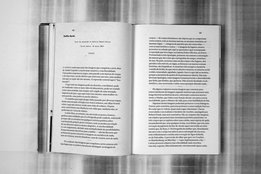 Texts2014Nothing by Delfim Sardo
Texts2014Nothing by Delfim Sardo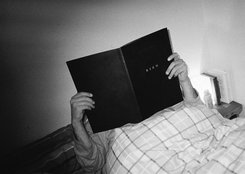 Texts2014Say Nothing by Phillippe Azoury
Texts2014Say Nothing by Phillippe Azoury Projects2014Fade
Projects2014Fade Books2014Rien Text Book
Books2014Rien Text Book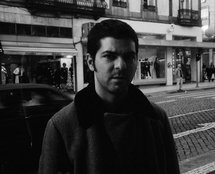 Projects2014Interview with Anna Meschiari (in French)
Projects2014Interview with Anna Meschiari (in French)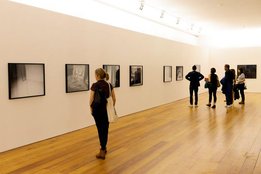 Projects2014Exhibition views, Centro Cultural Vila Flor
Projects2014Exhibition views, Centro Cultural Vila Flor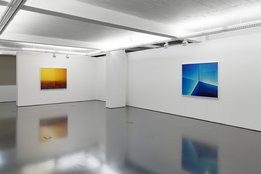 Projects2013Exhibition view, Galeria Pedro Cera
Projects2013Exhibition view, Galeria Pedro Cera Books2013Whispering Light/ Luz Sussurrada
Books2013Whispering Light/ Luz Sussurrada Texts2013Rien by Nuno Crespo
Texts2013Rien by Nuno Crespo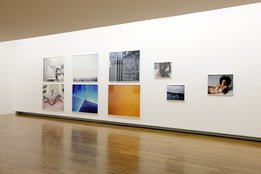 Texts2013Líneas abstractas by David Barro
Texts2013Líneas abstractas by David Barro  Texts2013São Paulo em corte by Agnaldo Farias
Texts2013São Paulo em corte by Agnaldo Farias Projects2013Lapa do Lobo
Projects2013Lapa do Lobo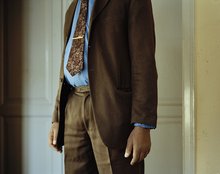 Projects2013Intendente
Projects2013Intendente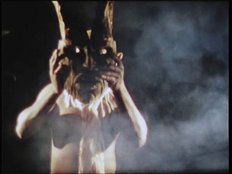 Projects2013Super8 - HHY & The Macumbas, "Isaac, The Throat"
Projects2013Super8 - HHY & The Macumbas, "Isaac, The Throat" 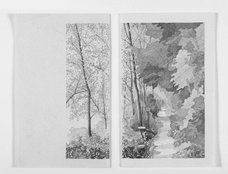 Books2012Canal
Books2012Canal Books2012Rien
Books2012Rien Projects2012Bandeiras, 2011, 16 mm film, colour, 1’10’’
Projects2012Bandeiras, 2011, 16 mm film, colour, 1’10’’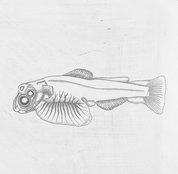 Projects2012LP - L'Histoire de La Croquette
Projects2012LP - L'Histoire de La Croquette Texts2012Rien by Rémi Coignet
Texts2012Rien by Rémi Coignet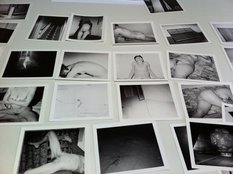 Work2012Rien
Work2012Rien Projects2012Entrevista para abitpixel (in portuguese)
Projects2012Entrevista para abitpixel (in portuguese) Texts2012rien – nier - rein by Regina Guimarães
Texts2012rien – nier - rein by Regina Guimarães Projects2010Couple, Porto, 2009, 16 mm film, colour, 1’25’’
Projects2010Couple, Porto, 2009, 16 mm film, colour, 1’25’’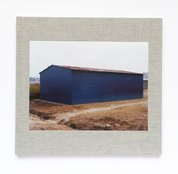 Books2010Ontem
Books2010Ontem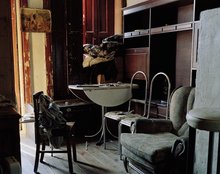 Texts2010Intuited breathing by Miguel von Hafe Pérez
Texts2010Intuited breathing by Miguel von Hafe Pérez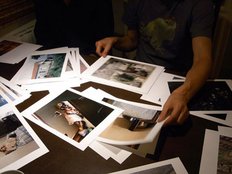 Texts2010Interview with Jean-Louis Godefroid
Texts2010Interview with Jean-Louis Godefroid Work2010Ontem
Work2010Ontem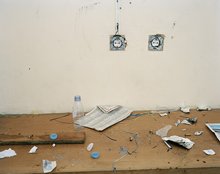 Texts2010Ontem to Foam Magazine by Sebastian Arthur Hau
Texts2010Ontem to Foam Magazine by Sebastian Arthur Hau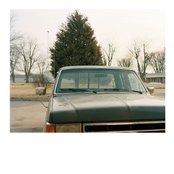 Projects2009LP River
Projects2009LP River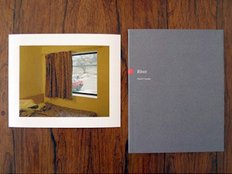 Books2009River
Books2009River Projects2008Exhibition views, Galeria ZdB
Projects2008Exhibition views, Galeria ZdB Projects2008River
Projects2008River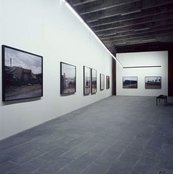 Texts2007what does the word ‘landscape’(...) by Delfim Sardo
Texts2007what does the word ‘landscape’(...) by Delfim Sardo Texts2006Moving by Johan Vonck
Texts2006Moving by Johan Vonck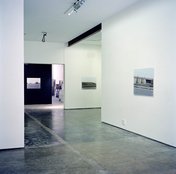 Texts2006Sleepwalking Images by Miguel von Hafe Pérez
Texts2006Sleepwalking Images by Miguel von Hafe Pérez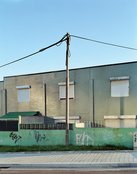 Projects2006Moving
Projects2006Moving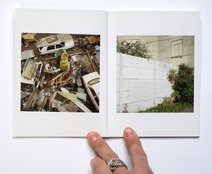 Books2005Anacronia
Books2005Anacronia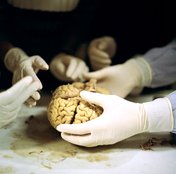 Texts2003Anacronia by Frits Gierstberg
Texts2003Anacronia by Frits Gierstberg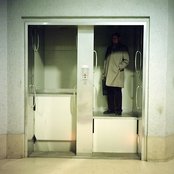 Texts2000Anacronia by Jean-Louis Godefroid
Texts2000Anacronia by Jean-Louis Godefroid Projects2000Anacronia
Projects2000Anacronia